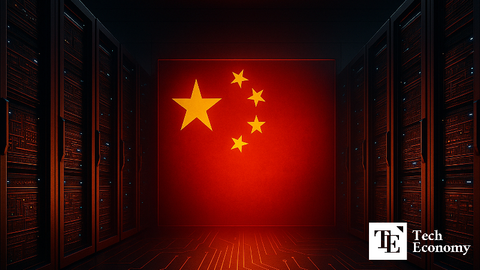“They’ve Secured Both Technology and Volume” — China’s YMTC Races Ahead in NAND Flash
Input
Changed
YMTC Projected to Produce 1.51 Million NAND Flash Wafers This Year Rapid Technological Leap Led by 'Hybrid Bonding' Samsung and SK Hynix Risk Losing Competitive Edge in China

As global semiconductor giants retrench in the face of market volatility, Yangtze Memory Technologies Co. (YMTC) is breaking away from the pack. China’s flagship NAND flash manufacturer is not only defying the industry’s production slowdown but also staking out bold new ground in memory technology. With robust government backing, cutting-edge innovation, and a rapidly growing foothold in the world’s largest NAND market—its own domestic base—YMTC is reshaping both commercial dynamics and geopolitical equations in the memory chip industry.
What makes this development even more striking is how YMTC’s rise is occurring just as its competitors pull back. The company is simultaneously expanding output, advancing in complex semiconductor processes like hybrid bonding, and introducing world-leading SSDs. In a market where caution rules, YMTC is accelerating—and the aftershocks are being felt globally.
Defying a Global Downturn With Bold Expansion
The NAND flash market has been facing a prolonged downturn, with average selling prices (ASPs) falling sharply due to excess inventory and soft demand. In response, most major players—including Samsung Electronics, SK Hynix, Micron, and Kioxia—have implemented significant production cuts to mitigate losses and stabilize prices. For instance:
- Micron has reduced its NAND flash wafer input by approximately 10% since late 2024.
- Samsung Electronics is projected to cut production by 6%, from 5.07 million wafers to 4.75 million.
- SK Hynix is expected to trim its output by 5%, from 2.1 million to 1.98 million wafers.
- Even Kioxia (in conjunction with Western Digital) has joined this wave of austerity.
Amid this conservative wave, YMTC is moving against the current. According to research firm Omdia, the company’s NAND flash production is forecast to jump from 1.21 million wafers in 2024 to 1.51 million in 2025—a record high for YMTC and a volume that overtakes Micron’s projected 1.3 million wafers, solidifying its position among the world’s top memory producers.
This sharp contrast signals more than a business gamble—it reflects a strategic ambition backed by national policy. Where others see risk, YMTC sees opportunity, emboldened by China’s push for technological independence in semiconductors.
Harnessing Innovation: Hybrid Bonding and 294-Layer SSDs
YMTC’s bold production push is underpinned by its rapidly advancing technological capabilities, particularly in hybrid bonding—a highly sophisticated chip packaging method increasingly seen as a cornerstone of future memory technology.
Unlike traditional techniques that rely on metallic bumps to link wafer layers, hybrid bonding directly connects wafers at the molecular level, enabling thinner chip structures, faster data transmission, and higher memory densities. Mastering this technique is no small feat, and YMTC’s progress here has drawn industry-wide attention.
So much so that in February, Samsung Electronics reportedly entered into a licensing agreement with YMTC over hybrid bonding technology. Analysts believe the move was designed to prevent potential patent disputes, a wise precaution given YMTC’s recent legal history. In fact, the Chinese firm previously filed a patent infringement lawsuit against Micron in a U.S. court over its NAND flash designs. A Korean industry insider noted, “Samsung likely acted early to avoid entangling itself in similar disputes.”
YMTC is also making waves in commercial product development. Its subsidiary Cheetah (치타이) recently launched the TiPro9000 SSD in the Chinese market, featuring a groundbreaking 294-layer memory structure—the first product to use YMTC’s Xtacking 4.0 architecture. This technology separates the memory array into two high-density stacks (150 and 144 layers), then fuses them using hybrid bonding.
The result is a major leap in bit density, greater efficiency in chip fabrication, and a product that positions YMTC at the forefront of next-generation NAND innovation. For a company once perceived as a second-tier player, this evolution marks its arrival on the global stage.

Home-Turf Advantage: Market Disruption in China and Global Repercussions
Perhaps the most consequential arena where YMTC is poised to dominate is its domestic market, which accounts for nearly 50% of global NAND flash consumption. Unlike its foreign competitors, YMTC benefits from strong Chinese government incentives that prioritize the use of locally produced chips.
Subsidies, procurement preferences, and favorable regulatory conditions are all part of Beijing’s strategy to increase semiconductor self-sufficiency. As one market analyst explained, “Just as CXMT is steadily increasing its share in the DRAM market, YMTC is expected to do the same in NAND flash.”
This trend spells trouble for South Korean giants Samsung and SK Hynix, both of whom have significant operations in China:
Samsung manufactures 40% of its NAND output in Xi’an, with much of it supplied to Chinese clients.
SK Hynix produces 20% of its NAND volume at its Dalian plant, also primarily for local customers.
As YMTC strengthens its grip on the Chinese market, these Korean companies risk losing both market share and client access.
The potential financial hit is not trivial. In the first three quarters of 2024:
- Samsung Electronics earned USD 35.31 billion from exports to China, about 30% of its total revenue—nearly matching its 29% from the Americas.
- SK Hynix derived USD 9.11 billion from China, representing 26% of its revenue, second only to its U.S. exposure USD 11.40 billion, or 34% of its revenue.
Given this deep commercial reliance on China, any market shift toward YMTC will likely impact the bottom lines of both companies. Analysts view this not as a short-term blip but a structural transformation that will continue to unfold as YMTC matures.
YMTC’s rise is a multi-pronged surge: higher production amid an industry contraction, rapid innovation in hybrid bonding, and a strategic foothold in the largest consumer market for NAND flash. Driven by national policy, backed by legal assertiveness, and armed with cutting-edge products, YMTC is no longer a peripheral competitor—it is now a formidable force in the global semiconductor race.
As geopolitical tensions escalate and global supply chains realign, the ascendancy of YMTC could mark the beginning of a new chapter in semiconductor history—one where China is no longer just a factory, but a global technology leader.





















